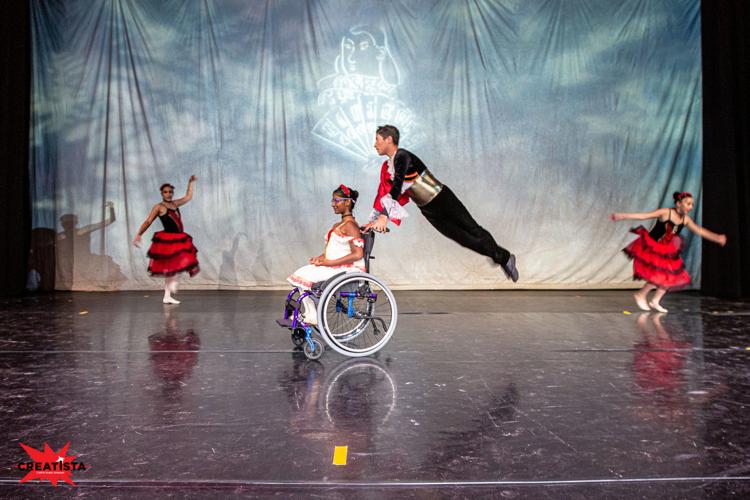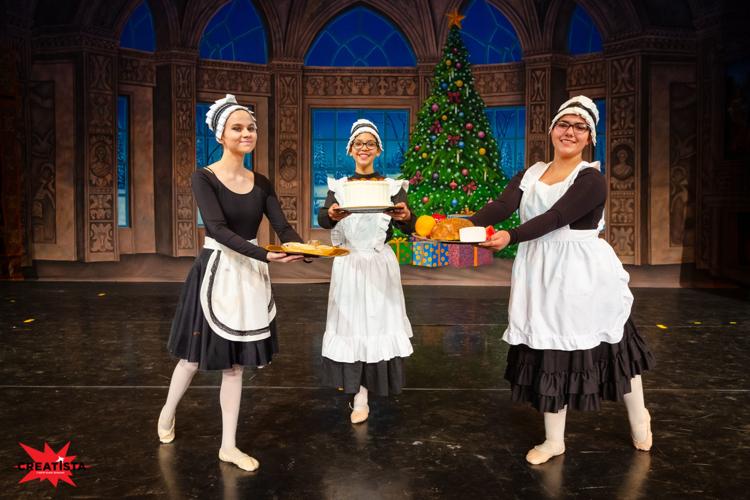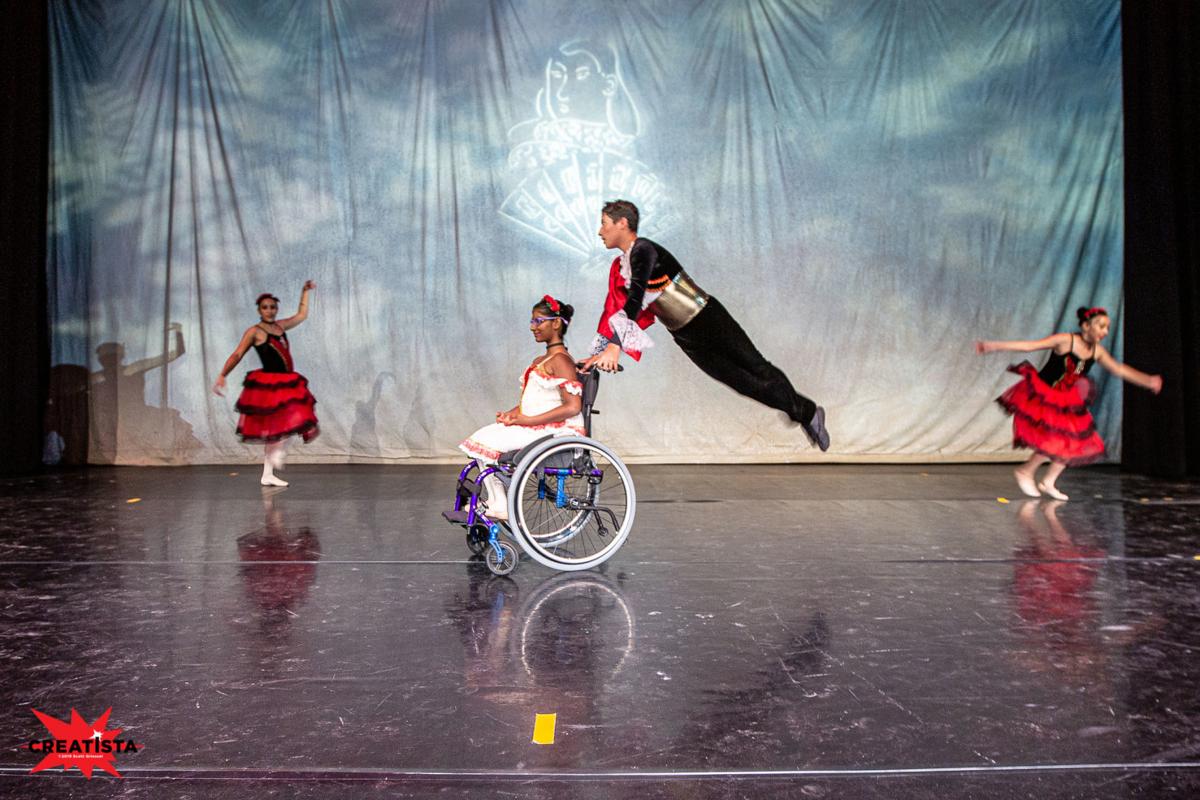For the past 12 years, Joseph Rodgers and his wife, Soleste Lupu-Rodgers, have been breaking down barriers to ballet for children in South Tucson.
“These are the poorest residents in Tucson and they want to protect their culture. Many people are uncertain about me bringing in ballet. They think that, one, it costs a lot of money; and two, they have to be white to do it; or three, they need to be a certain size or weight. We eliminate all of that. Ballet is an intimidating world and people have different perceptions, and I am trying to make it available for everyone who wants the opportunity,” said Rodgers, who founded the nonprofit Dancing in the Streets Arizona with money that the couple received as wedding gifts.
Rodgers, a Tucson native and Salpointe graduate, was a professional ballet dancer whose career spanned 30 years and boasted stints with Ballet Arizona, Feld Ballet in New York City, Ballet Chicago and the Milwaukee Ballet.
Lupu-Rodgers, who also grew up in Tucson and graduated from Sahuaro High School, received instruction at the Tucson Dance Academy under the direction of Maria Morton — where she first met Rodgers — before dancing at Camp Humphreys, South Korea, and moving on to regional companies and the LaMond Dance Ensemble in Tacoma, Washington.
The couple managed to keep in touch while pursuing their careers over the years and eventually both came full circle and returned to Tucson, where they decided to marry and start a ballet family, so to speak.
“When I came back to my old neighborhood, there was nothing for kids artistically, so I decided to start a ballet school,” Rodgers said. “Some people told me, ‘No, you are better off in the Foothills.’ The more I heard ‘No,’ the more I thought there is a need for ballet in South Tucson.”
He is proud to have the only classical ballet school in the city of South Tucson, serving students from surrounding neighborhoods as well as Vail, Marana, Sahuarita and Three Points.
During the fall, the school provides classes and rehearsals six days a week for about 180 youths, culminating in an annual “Nutcracker” performance.
Spring enrollment is typically about 100 kids, and about 70 students take summer classes. No auditions are required and the school serves students of all skills levels. About 70% of students receive partial scholarships and no student is turned away for inability to pay. Several graduates have gone on to dance professionally for companies such as State Street Ballet of Santa Barbara, California, and the Louisville Ballet.
The couple are proud to be building both dancers and a multigenerational audience. They credit collaboration with the all-volunteer Civic Orchestra of Tucson and other organizations, community leaders and businesses for their contributions and assistance with community performances.
“This is more than a show. The parents and community leaders see how we put it together and make it one big family. ... I call it organized chaos, but you really see the beauty because it all just kind of jells,” Rodgers said.

Jessica Padilla (pictured at right in the Nutcracker in December 2019) and other supporters of Dancing in the Streets are speaking out in an effort to raise $175,000 to assist with operating costs for the husband-and-wife minority nonprofit that has been hit hard during the COVID-19 pandemic. Donations can be made online at https://www.ditsaz.org to help support arts education for at-risk children.
Dancing in the Streets is also unique in that it offers opportunities for “Ballet Ability Girls,” which include students who take the stage in wheelchairs and others who dance with health conditions and limitations.
Ultimately, Rodgers and Lupu-Rodgers are witnessing the realization of their mission, which is to harness the power of dance to transform lives and to utilize the discipline of ballet to guide children in developing positive life skills.
Students like Elvis Hernandez can attest to the benefits of ballet.
The 14-year-old, who will be a freshman at San Miguel High School, began dancing about three years ago after his younger sister became a student at Dancing in the Streets.
“Mr. Rodgers and Ms. Soleste kept asking if I wanted to join them and I tried a class and now I am doing ballet. I enjoy it because it is a good workout and it is a way to express myself to others. It also helps with my jumping and foot work and I can take that to basketball,” said Hernandez, who plays point guard.
Jessica Padilla, an eighth-grader at Utterback Middle School , also recognizes the positive impacts of ballet.
“When I get mad or upset, I dance and it will calm my mind down. And I like all the movement; it is a good workout,” said Padilla, who began taking lessons four years ago and has danced in numerous community performances and Nutcrackers, including one in which she was paired with a Ballet Ability Girl.
“It felt nice. She gave me a hug afterward,” said Padilla.
The pandemic has contributed to the economic uncertainty that many children and families feel and to the struggles faced by small minority-run nonprofits, according to Lupu-Rodgers.
“Everyone’s hearts goes out to businesses and we all try to support them, but nonprofits don’t have a product to buy or sell. We offer services, and the students in our demographic can’t do Zoom classes,” she said.
“Many don’t have internet or maybe they have one device per household, so online classes are not an option for many in our population. We really see the digital divide. Plus, so much of ballet is hands-on.”
The couple hope to offset some of that uncertainty with fundraising. A recent Save Our Ballet birthday fundraiser for Rodgers raised about $9,500 and they would like to build on that with donations to their website at www.ditsaz.org.






